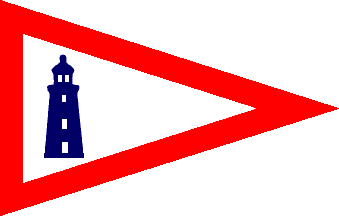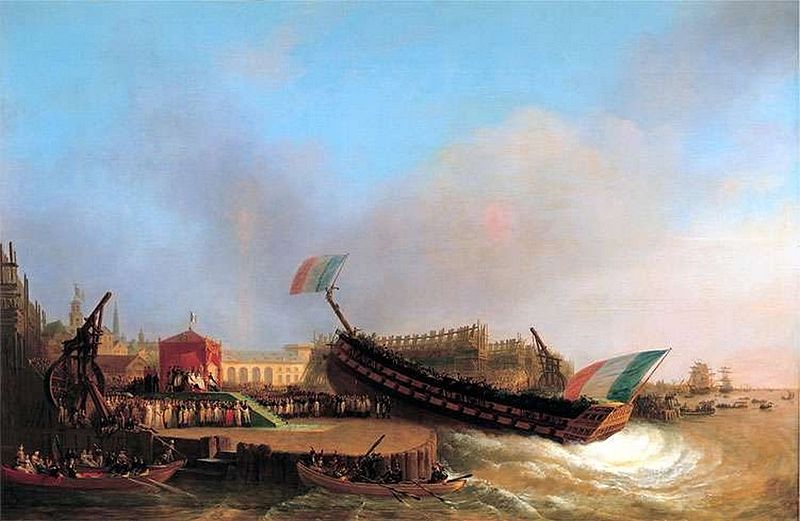|
SM UB-40
SM ''UB-40'') and combined with the ''U'' for ''Unterseeboot'' would be translated as ''His Majesty's Submarine''., group=Note was a German Type UB II submarine or U-boat in the German Imperial Navy (german: Kaiserliche Marine) during World War I. Design A German Type UB II submarine, ''UB-40'' had a displacement of when at the surface and while submerged. She had a total length of , a beam of , and a draught of . The submarine was powered by two Körting six-cylinder diesel engines producing a total , two Siemens-Schuckert electric motors producing , and one propeller shaft. She was capable of operating at depths of up to . The submarine had a maximum surface speed of and a maximum submerged speed of . When submerged, she could operate for at ; when surfaced, she could travel at . ''UB-40'' was fitted with two torpedo tubes, four torpedoes, and one Uk L/30 deck gun. She had a complement of twenty-one crew members and two officers and a 42-second dive time. Constructi ... [...More Info...] [...Related Items...] OR: [Wikipedia] [Google] [Baidu] |
German Empire
The German Empire (), Herbert Tuttle wrote in September 1881 that the term "Reich" does not literally connote an empire as has been commonly assumed by English-speaking people. The term literally denotes an empire – particularly a hereditary empire led by an emperor, although has been used in German to denote the Roman Empire because it had a weak hereditary tradition. In the case of the German Empire, the official name was , which is properly translated as "German Empire" because the official position of head of state in the constitution of the German Empire was officially a " presidency" of a confederation of German states led by the King of Prussia who would assume "the title of German Emperor" as referring to the German people, but was not emperor of Germany as in an emperor of a state. –The German Empire" ''Harper's New Monthly Magazine''. vol. 63, issue 376, pp. 591–603; here p. 593. also referred to as Imperial Germany, the Second Reich, as well as simply Germa ... [...More Info...] [...Related Items...] OR: [Wikipedia] [Google] [Baidu] |
Beam (nautical)
The beam of a ship is its width at its widest point. The maximum beam (BMAX) is the distance between planes passing through the outer extremities of the ship, beam of the hull (BH) only includes permanently fixed parts of the hull, and beam at waterline (BWL) is the maximum width where the hull intersects the surface of the water. Generally speaking, the wider the beam of a ship (or boat), the more initial stability it has, at the expense of secondary stability in the event of a capsize, where more energy is required to right the vessel from its inverted position. A ship that heels on her ''beam ends'' has her deck beams nearly vertical. Typical values Typical length-to-beam ratios ( aspect ratios) for small sailboats are from 2:1 (dinghies to trailerable sailboats around ) to 5:1 (racing sailboats over ). Large ships have widely varying beam ratios, some as large as 20:1. Rowing shells In watercraft, a racing shell (also referred to as just a ''fine boat'' (UK) or just ' ... [...More Info...] [...Related Items...] OR: [Wikipedia] [Google] [Baidu] |
List Of Shipwrecks In February 1917
The list of shipwrecks in February 1917 includes ship A ship is a large watercraft that travels the world's oceans and other sufficiently deep waterways, carrying cargo or passengers, or in support of specialized missions, such as defense, research, and fishing. Ships are generally distinguished ...s sunk, foundered, grounded, or otherwise lost during February 1917. 1 February 2 February 3 February 4 February 5 February 6 February 7 February 8 February 9 February 10 February 11 February 12 February 13 February 14 February 15 February 16 February 17 February 18 February 19 February 20 February 21 February 22 February ... [...More Info...] [...Related Items...] OR: [Wikipedia] [Google] [Baidu] |
List Of Shipwrecks In December 1916
The list of shipwrecks in December 1916 includes ships sunk, foundered, grounded, or otherwise lost during December 1916 The following events occurred in December 1916: December 1, 1916 (Friday) * Battle of the Argeș – The Romanian force of 150,000 attacked the Danube Army of 250,000 men under command of German General Erich Ludendorff southwest o .... 1 December 2 December 3 December 4 December 5 December 6 December 7 December 8 December 9 December 10 December 11 December 12 December 13 December 14 December 15 December 16 December 17 December 18 December 19 December 20 December 21 December 22 December 23 December 24 December 25 December 26 December 27 Decem ... [...More Info...] [...Related Items...] OR: [Wikipedia] [Google] [Baidu] |
List Of Shipwrecks In November 1916
The list of shipwrecks in November 1916 includes ships sunk, foundered, grounded, or otherwise lost during November 1916 The following events occurred in November 1916: November 1, 1916 (Wednesday) * Ninth Battle of the Isonzo – Italy expanded its attacks on the Soča, Soča Valley and other parts of the Karst Plateau bordering Italy and Austria-Hun .... 1 November 2 November 3 November 4 November 5 November 6 November 7 November 8 November 9 November 10 November 11 November 12 November 13 November 14 November 15 November 16 November 17 November 18 November 19 November 20 November 21 November 22 November 23 November 24 November 25 November 26 November ... [...More Info...] [...Related Items...] OR: [Wikipedia] [Google] [Baidu] |
List Of Shipwrecks In October 1916
The list of shipwrecks in October 1916 includes ships sunk, foundered, grounded, or otherwise lost during October 1916. 1 October 2 October 3 October 4 October 5 October 6 October 7 October 8 October 9 October 10 October 11 October 12 October 13 October 14 October 15 October 16 October 17 October 18 October 19 October 20 October 21 October 22 October 23 October 24 October 25 October 26 October 27 October 28 October 29 October 30 October 31 October Unknown date References {{shipevents, 1916 1916-10 10 ... [...More Info...] [...Related Items...] OR: [Wikipedia] [Google] [Baidu] |
Ostend
Ostend ( nl, Oostende, ; french: link=no, Ostende ; german: link=no, Ostende ; vls, Ostende) is a coastal city and municipality, located in the province of West Flanders in the Flemish Region of Belgium. It comprises the boroughs of Mariakerke, Raversijde, Stene and Zandvoorde, and the city of Ostend proper – the largest on the Belgian coast. History Origin to Middle Ages In the Early Middle Ages, Ostend was a small village built on the east-end () of an island (originally called Testerep) between the North Sea and a beach lake. Although small, the village rose to the status of "town" around 1265, when the inhabitants were allowed to hold a market and to build a market hall. The major source of income for the inhabitants was fishing. The North Sea coastline has always been rather unstable due to the power of the water. In 1395 the inhabitants decided to build a new Ostend behind large dikes and further away from the always-threatening sea. 15th to 18th century T ... [...More Info...] [...Related Items...] OR: [Wikipedia] [Google] [Baidu] |
Ship Commissioning
Ship commissioning is the act or ceremony of placing a ship in active service and may be regarded as a particular application of the general concepts and practices of project commissioning. The term is most commonly applied to placing a warship in active duty with its country's military forces. The ceremonies involved are often rooted in centuries-old naval tradition. Ship naming and launching endow a ship hull with her identity, but many milestones remain before she is completed and considered ready to be designated a commissioned ship. The engineering plant, weapon and electronic systems, galley, and other equipment required to transform the new hull into an operating and habitable warship are installed and tested. The prospective commanding officer, ship's officers, the petty officers, and seamen who will form the crew report for training and familiarization with their new ship. Before commissioning, the new ship undergoes sea trials to identify any deficiencies needing c ... [...More Info...] [...Related Items...] OR: [Wikipedia] [Google] [Baidu] |
Ceremonial Ship Launching
Ceremonial ship launching involves the performance of ceremonies associated with the process of transferring a vessel to the water. It is a nautical tradition in many cultures, dating back thousands of years, to accompany the physical process with ceremonies which have been observed as public celebration and a solemn blessing, usually but not always, in association with the launch itself. Ship launching imposes stresses on the ship not met during normal operation and, in addition to the size and weight of the vessel, represents a considerable engineering challenge as well as a public spectacle. The process also involves many traditions intended to invite good luck, such as christening by breaking a sacrificial bottle of champagne over the bow (ship), bow as the ship is named aloud and launched. Methods There are three principal methods of conveying a new ship from building site to water, only two of which are called "launching". The oldest, most familiar, and most widel ... [...More Info...] [...Related Items...] OR: [Wikipedia] [Google] [Baidu] |
Propeller Shaft
A drive shaft, driveshaft, driving shaft, tailshaft (Australian English), propeller shaft (prop shaft), or Cardan shaft (after Girolamo Cardano) is a component for transmitting mechanical power and torque and rotation, usually used to connect other components of a drivetrain that cannot be connected directly because of distance or the need to allow for relative movement between them. As torque carriers, drive shafts are subject to torsion and shear stress, equivalent to the difference between the input torque and the load. They must therefore be strong enough to bear the stress, while avoiding too much additional weight as that would in turn increase their inertia. To allow for variations in the alignment and distance between the driving and driven components, drive shafts frequently incorporate one or more universal joints, jaw couplings, or rag joints, and sometimes a splined joint or prismatic joint. History The term ''driveshaft'' first appeared during the mid-19th centu ... [...More Info...] [...Related Items...] OR: [Wikipedia] [Google] [Baidu] |



_underway_2009.jpg)

